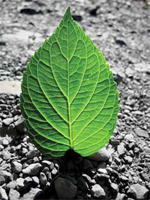USBI, June 2010

US Focused Biochar Report: Assessment of Biochar's Benefit's for the USA
From the Forward
Biochar is a charcoal carbon product derived from biomass that can enhance soils, sequester or store carbon, and provide useable energy. Lessons learned from Terra Preta (an ancient human-created soil type in Brazil) suggest that biochar will have carbon storage permanence in the soil for many hundreds and possibly thousands of years.2 Biochar is produced by subjecting biomass to elevated temperature, extracting energy in the form of heat, gases, and/or oils while retaining a large portion of the original biomass carbon in a solid form (charcoal or char). The relative percentage of solid carbon retained vs. the amount and form of energy produced is a function of the process conditions. The resultant solid carbon becomes biochar when it is returned to soils with the potential to enhance mineral and nutrient availability and water holding capacity, while sequestering carbon for on the order of a thousand years...
Well designed renewable energy (RE) technologies such as energy efficiency, solar, wind, geothermal, hydroelectric, and biomass driven projects are needed to ensure a diverse portfolio of sustainable solutions to meet our energy demands. These RE technologies offer opportunities to produce energy that is carbon neutral, whereas biochar offers the potentialto be carbon negative. Biochar as a method of carbon management is also widely scalable in size and flexible across soil type and usage making biochar deployable worldwide. ...
The following report addresses six critical topics:
- Agroforestry
- Energy Co-Products
- Reclamation
- Sustainability
- Green House Gas Accounting
- Green House Gas Markets
Each of these areas will continue to develop over time with research and application but the information presented in this report serves as a resource for those becoming involved or continuing to be involved in the exciting development of biochar. USBI encourages readers to consider how they might add to this body of biochar knowledge and contact us for suggestions and contributions

